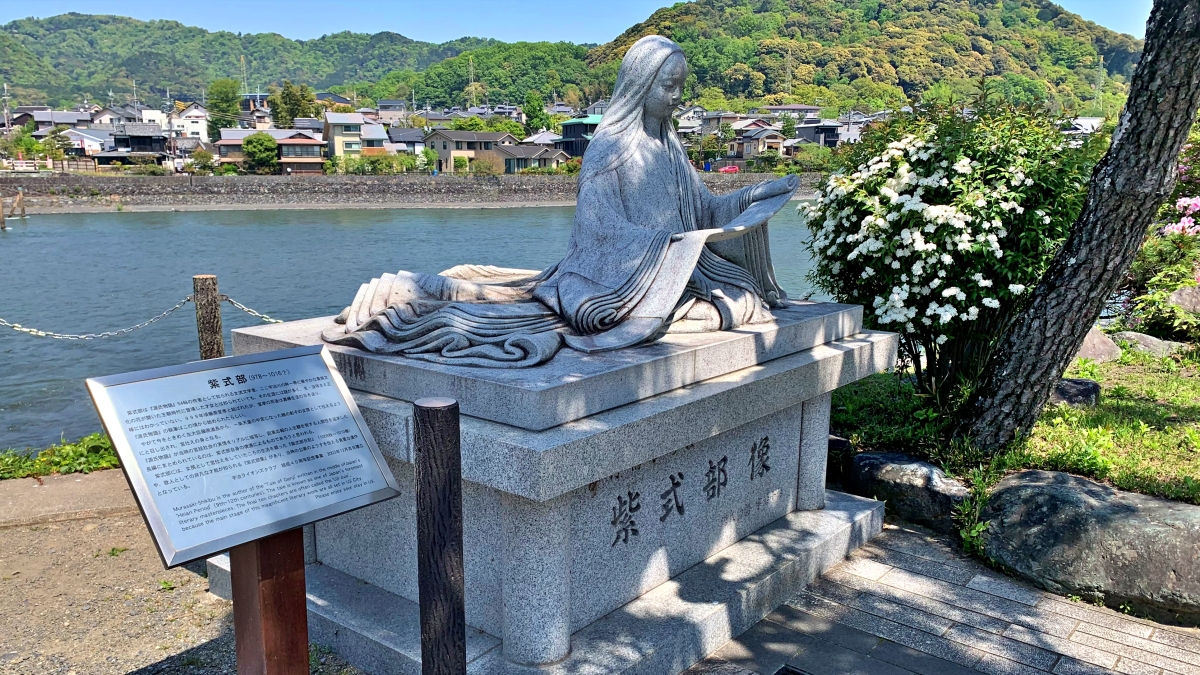Language:Japanese
“The Nakanoshima (Tounoshima and Tachibanajima)” floating on the sandbar of the Uji River, which has flowed to the fullest for over a thousand years, and “Yorimichi Park” on the left bank are collectively known as “Kyoto Prefectural Uji Park,” and are famous cherry blossom spots where “The Uji River Cherry Blossom Festival” is held in early April.
It is also a place where you can enjoy the scenery that changes with the seasons, with autumn leaves visible from late November to early December.
Nearby is “Byoudoin-Hououdo” (World Heritage Site), where the Fujiwara clan tried to embody the Pure Land of Paradise in this world.
“Byodo-in Temple” is also a famous spot for wisteria, and at the end of the cherry blossom season, the light purple wisteria flowers bloom beautifully with a sweet fragrance.

Wisteria at Byodo-in Temple
Around “Kyoto Prefectural Uji Park,” you can also find Japan’s oldest shrine building, “Ujigami Shrine” (World Heritage Site), and Japan’s oldest bridge, “Uji Bridge.”
This area is also the setting for “The Tale of Genji,” and there is “The legend of Hashihime,” in which a woman driven mad by jealousy at Uji Bridge becomes a demon.
Since it is a very historically important area, there are many valuable buildings, cultures, and legends, and it is not possible to introduce them all at once, so this time I will only introduce what I saw while taking a walk.
Murasaki Shikibu’s “The Tale of Genji” stage
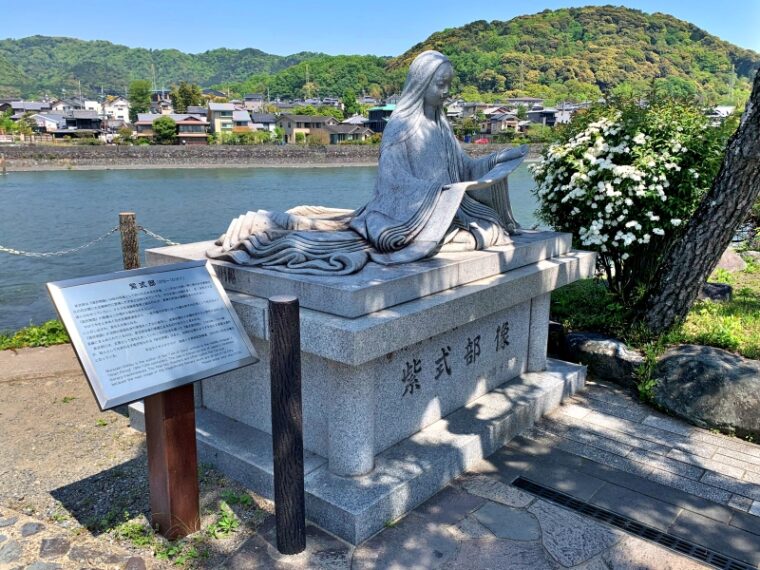
The Tale of Genji is a work that depicts the aristocratic society of the Heian period through the protagonist, Hikaru Genji, and is said to be the oldest full-length novel in Japan, written by Murasaki Shikibu in the mid-Heian period.
The story consists of 54 chapters, and chapters 45 to 54 are called “The Uji Ten Chapters.” This part is a story that takes place after Hikaru Genji’s death, with Kaoru Daisho as the main character, is depicted as the main setting, and “The Yumeukibashi” that is talked about in the last volume, chapter 54, is said to be “Uji Bridge.”
Uji Bridge
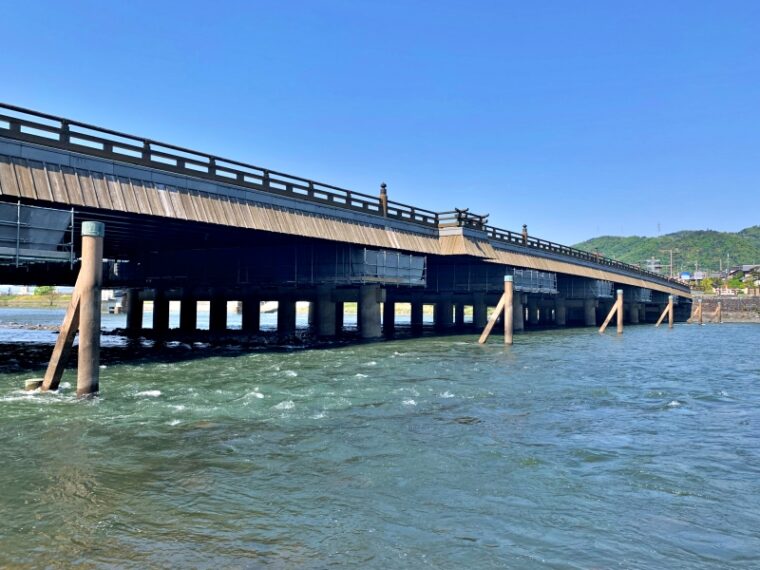
[Uji Bridge] The central protrusion is “San-no-ma”
“Hashihime” is often enshrined as a guardian deity on large bridges that have been around for a long time, as it has the meaning of “preventing the invasion of foreign enemies” and “Uji Bridge” also has “Sannoma” that juts out in the center. There are still remnants from the time when “Hashihime” was enshrined here.
The legend of Uji’s Hashihime
“Hashihime” is a woman (demon/goddess) who appears in the legends passed down since ancient times in Japan, and is said to be a very jealous deity. “Hashihime of Uji” is told in the 45th chapter of “The Tale of Genji,” but it also appears in the older “Kokin Wakashu” and “The Tale of the Heike,” and there is a legend about a jealous woman who became a demon in rage at her husband’s infidelity.
During the reign of Emperor Saga (809-823), a jealous woman became angry that her husband had taken a mistress, prayed to the Kifune Myojin Shrine, and as told, immersed herself in the Uji River for 100 days, becoming a demon while still alive. rice field.
She then killed her hated husband and his lover, and continued to kill people of all genders after that, so the legend goes that she was enshrined at a shrine as Hashihime.
Excerpt from “The Tale of the Heike: Sword Scroll”
Uji Park
Leaving Uji Bridge behind and going up the bank of the Uji River, you will see the bridges to Uji Park, “Tachibana Bridge” and “Kisen Bridge.” This area is famous for cormorant fishing(Ukai), along with Arashiyama in Kyoto.
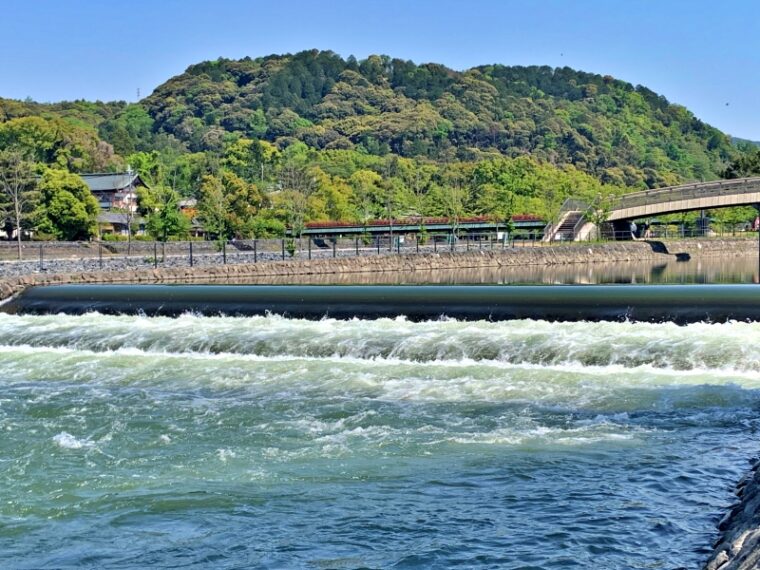
The area upstream from this dam is where “Ukai (cormorant fishing)” is held, and the water surface appears calm and mirror-like compared to the area downstream where the current is steep. This is because there are dams built by calculating the amount and flow of water in order to carry out cormorant fishing.
Tachibana Bridge
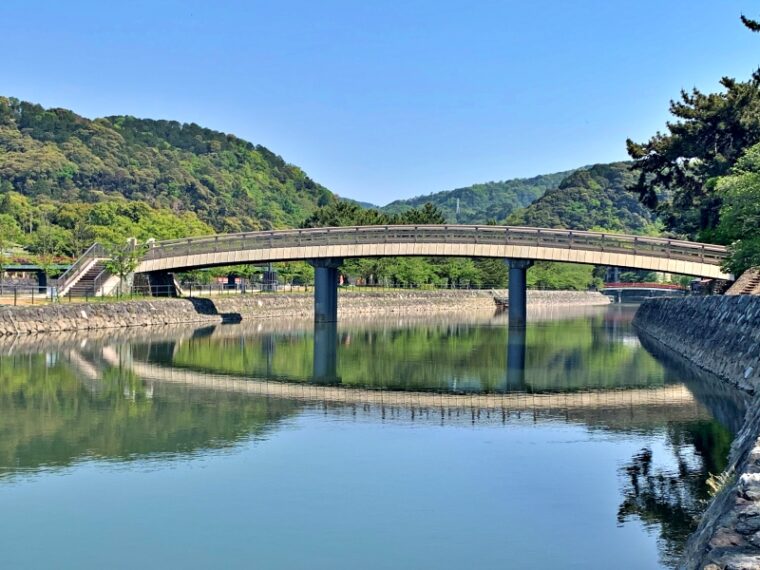
The water reflects “Tachibana Bridge” like a mirror. Across the bridge is “Tachibana Island,” and in the middle stands “The Ujigawa Senjin no Hai” (Ujigawa Vanguard Monument).
Tachibanajima “Ujigawa Senjin no Hai” (Ujigawa Vanguard Monument)
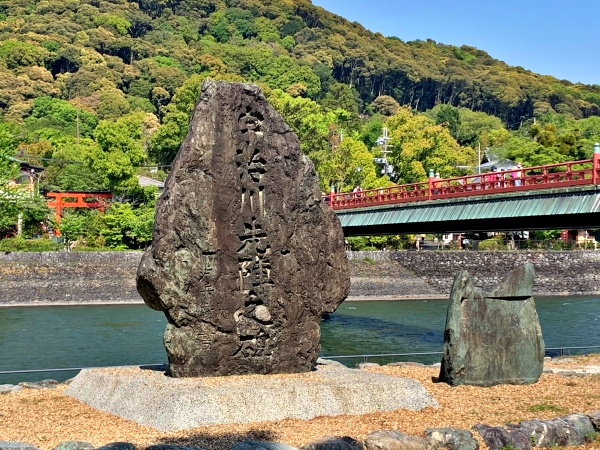
The Battle of Uji River was a battle between two Minamoto clan men, “Kiso Yoshinaka” and “Minamoto no Yoshitsune,” who fought for supremacy, with Yoshitsune emerging victorious.
At that time, Yoshitsune’s subordinates, “Kajiwara Kagesue” and “Sasaki Takatsuna,” competed to see who could cross the river the fastest on horseback, and “The Ujigawa Senjin no Hai” (Uji River Vanguard Monument) was erected in commemoration of this event.
“The Ujigawa Senjin no Hai” was built in 1931 (Showa 6), but it is said that the event actually took place further downstream than the current Uji Bridge.
Asagiri Bridge
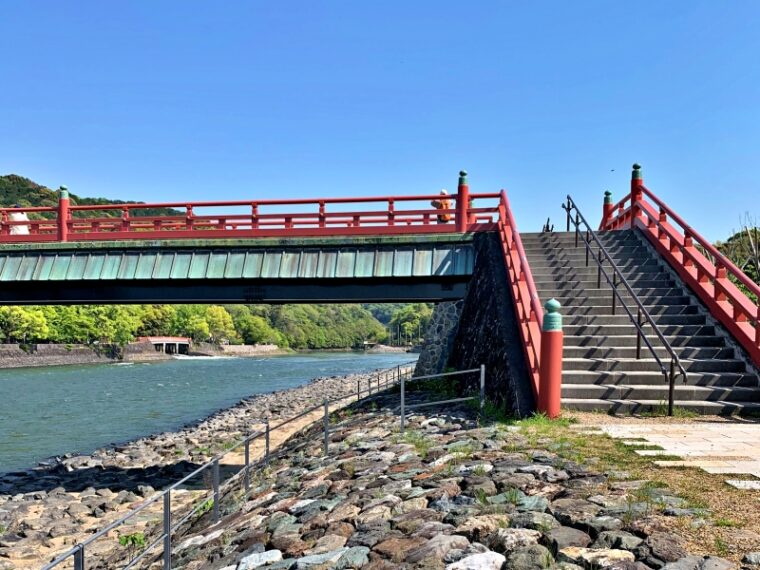
The bridge with the vermilion railing right next to “The Ujigawa Senjin no Hai” is “Asagiri Bridge,” and if you cross it you can go to “Ujigami Shrine,” the oldest shrine building in Japan.
Kisen Bridge
If you go further upstream beyond “Tachibana Bridge,” you will see “Kisen Bridge.” This area is the area where “Ukai (cormorant fishing)” is held every year from the beginning of July to the end of September, and there is a “Uji River cormorant fishing boat terminal” on the left bank.
Ukai (Cormorant Fishing)
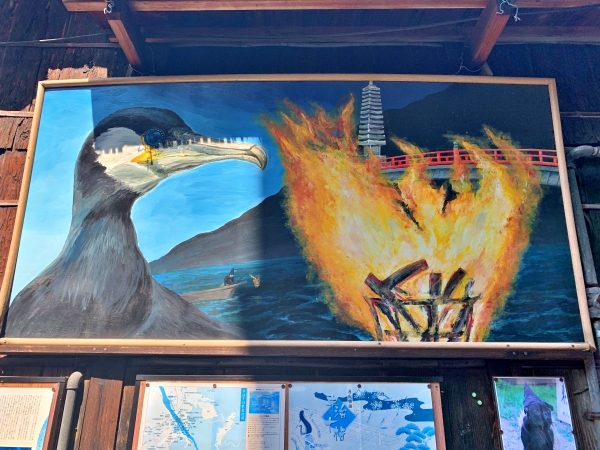
It is an exquisite experience to enjoy your meal on a houseboat while watching the light of torches reflected on the river surface and the skillful techniques of the cormorant fisher (Usyou). According to the Uji City Environmental Association website, “Shared boats are only available on the day, and reservations are not accepted,” so it might be a good idea to enjoy cormorant fishing with your family or friends whenever you feel like it.
You can check the opening hours and prices of the sightseeing boats on this website. ➡ Uji City Environmental Association
Tounoshima and Kisen Bridge
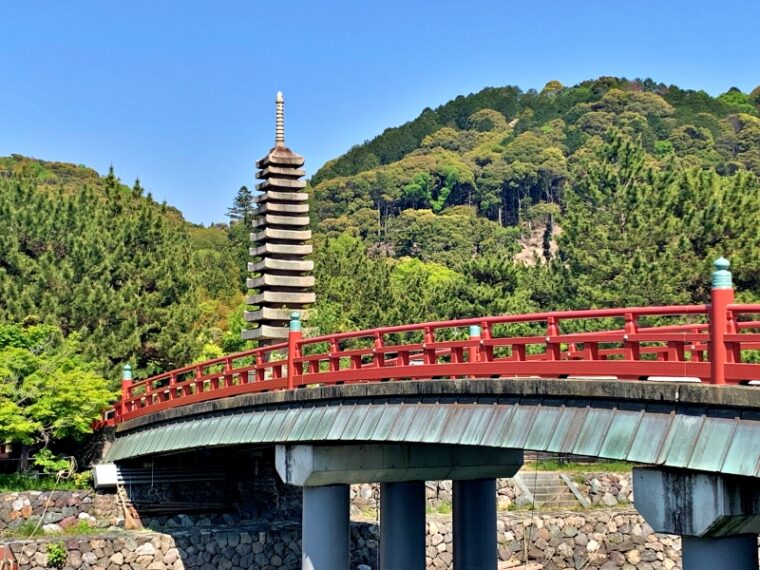
The vermilion-painted bridge that spans “Tounoshima (Pagoda Island)” is “Kisen Bridge,” and the stone tower that can be seen on the other side of the bridge is “The Jusanjusekito (Thirteen-Story Stone Pagoda),” which has been designated as an Important Cultural Property of Japan.
Tounoshima “Jusanjusekito”
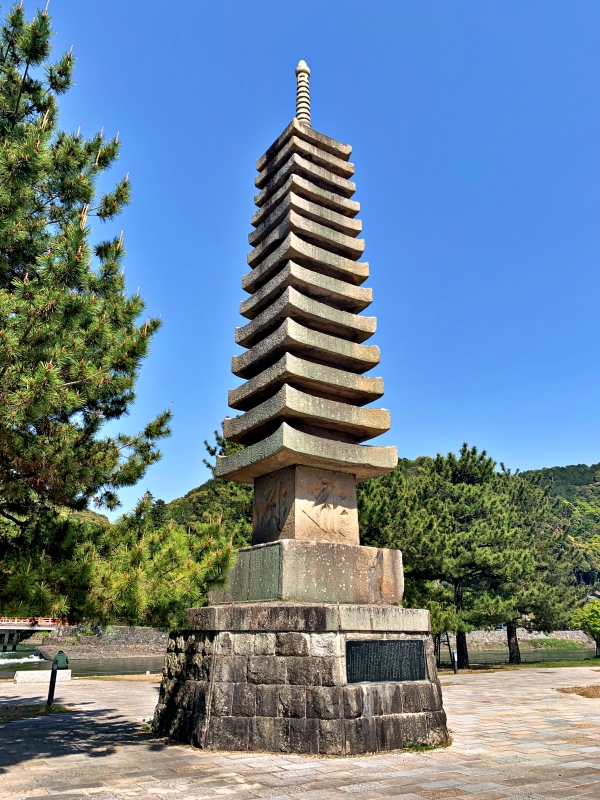
On Tounoshima , there is a conspicuous “13-story stone pagoda” with a height of about 15 meters. This pagoda is the largest ancient stone pagoda in Japan, and is said to have been built in the late Kamakura period by the monk Eison of Saidaiji Temple in Nara to hold a memorial service for the spirits of fish, and is also known as the “Fish Spirit Memorial Tower.”
The current pagoda was rebuilt in 1908 (Meiji 41), and the ”13-story stone pagoda” built in 1286 (Koan 9) was washed away by the great flood of 1756 (Horeki 6). It seems that it was done.
Tounoshima “Cormorant Breeding Hut”
There was a “Cormorant Breeding Hut” on Tonoshima, and the “Japanese cormorant” that had been domesticated from the wild and the “Japanese cormorant” that were born here were kept separately.
The cormorants used in cormorant fishing are migratory birds called Japanese cormorants. Wild Japanese cormorants are nervous birds, so it was said that they would not even lay eggs in captivity. However, here in Uji, artificial incubation was successfully carried out for the first time in Japan in 2014, and chicks have been born every year since then.
The cormorants born here are called “Utsutii” and are very charming by flapping their wings.
As the zookeeper was cleaning the hut, I asked him about the wild cormorants and Utsutii. He told me that wild cormorants are quite aggressive and difficult to tame.
On the other hand, “Utsutii” is like a pet, and seems to consider the cormorant fisher his real parent.
What is cormorant fishing ?
Cormorants have a distinctive feature that their throats are shaped like pouches, and “cormorant fishing” is a form of fishing that makes use of this habit of cormorants to swallow fish. The cormorant fisher adjusts the tightness of the “kubiyui” (a string tied around the cormorant’s neck) so that larger fish are trapped by the cormorant’s neck and smaller fish pass through the neck so that the cormorant can eat it.
No matter how well-bred a cormorant is, if it is forced to vomit up all the fish it has swallowed, it won’t try to catch any fish.
A large gray heron found next to the breeding shed
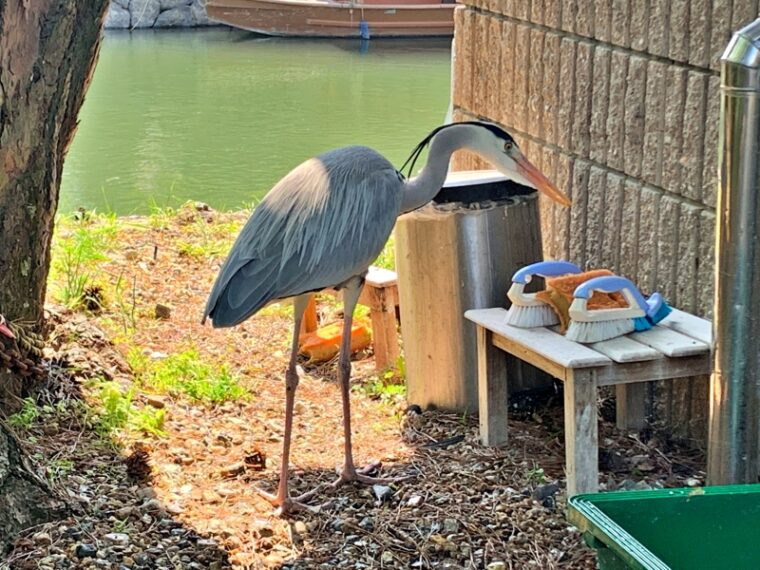
Around the breeding hut, a heron that appeared to be wild seemed to be looking for food.
The beautiful heron was about the height of an elementary school student and was very large, but perhaps because it was used to people, it did not become aggressive or run away even when I approached within reach.
However, according to the zookeeper, “If startled, it may attack,” so it is probably best not to get close.
To conclude
This time I introduced what I found while walking around Uji Park in Kyoto, but as this was chosen by aristocrats during the Heian period as one of their vacation homes, there is likely still more to see, so I would like to introduce it again once the season changes.

